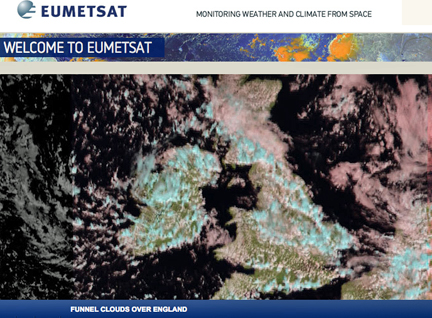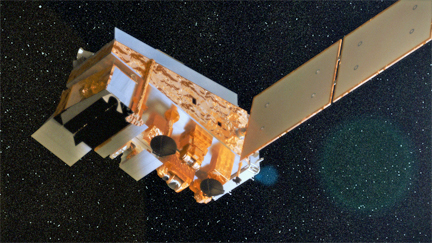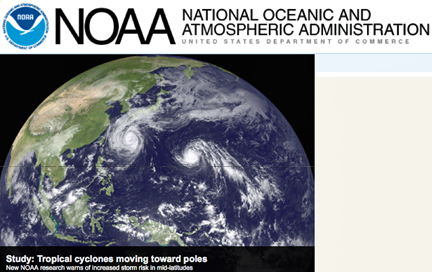
[SatNews] EUMETSAT has started to deliver sea surface temperature products to Copernicus, the EU program for monitoring the Earth environment and security.

Artistic rendition of the Suomi-NPP satellite.
The data is deriived from the Suomi-NPP spacecraft of the US National Oceanic and Atmospheric Administration (NOAA). The sea surface temperature data is being provided to MyOcean2, the consortium tasked by the European Commission to deliver the pre-operational Copernicus marine service.

EUMETSAT has been designated by the European Commission as the provider of data from the Suomi-NPP polar-orbiting satellite to the Copernicus marine and atmosphere services under a project known as SNPP4C. Through this project, EUMETSAT will also deliver atmospheric composition products to MACC-II, and ocean color products to MyOcean2. EUMETSAT’s long and productive relationship with NOAA is key to the success of the project.
Sea surface temperature has important applications in understanding and predicting ocean currents, as well as the development of weather systems over open water. Data from Suomi-NPP is transmitted in near real-time, travelling via the NOAA ground segment to EUMETSAT, where it is tailored for the Copernicus service’s requirements. The product is disseminated on EUMETCast.
“The new sea surface temperature product is a valuable addition to our service,” says Laurence Crosnier, MyOcean Central Product Manager. “We are pleased to rely on EUMETSAT for the tailoring and distribution of essential data.”
“This project demonstrates that we can create a smooth path from other satellite operators to European users,” says Simon Elliott, the project manager for SNPP4C at EUMETSAT. “Even when all of the Copernicus satellite instruments are operational, there will still be a need for complementary data.”
EUMETSAT information is readily available at http://www.eumetsat.int/website/home/index.html
NOAA's infosite may be accessed via http://www.noaa.gov

